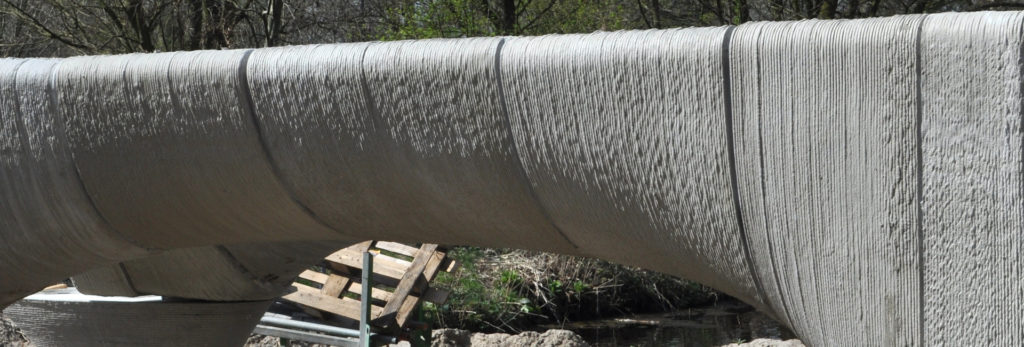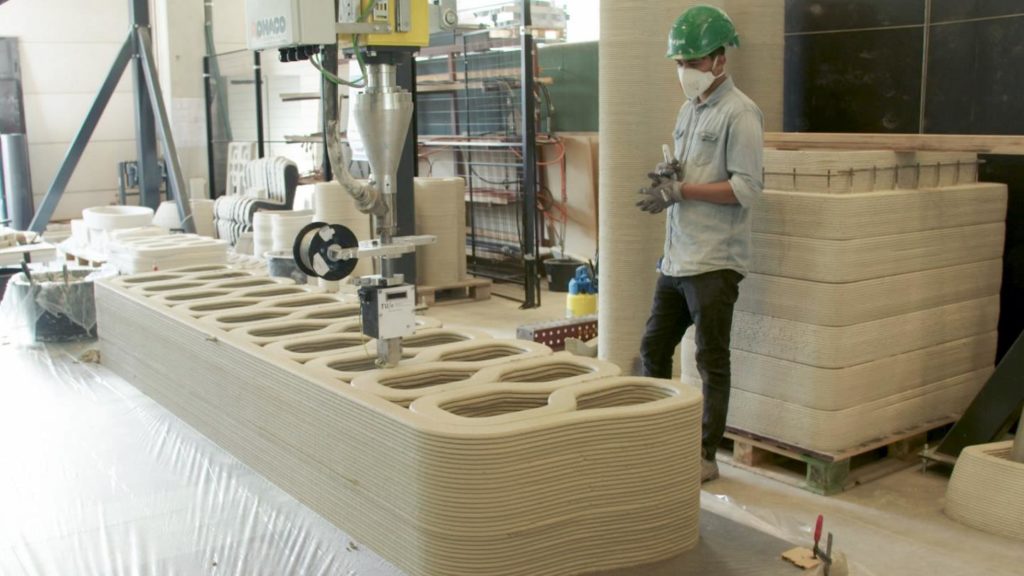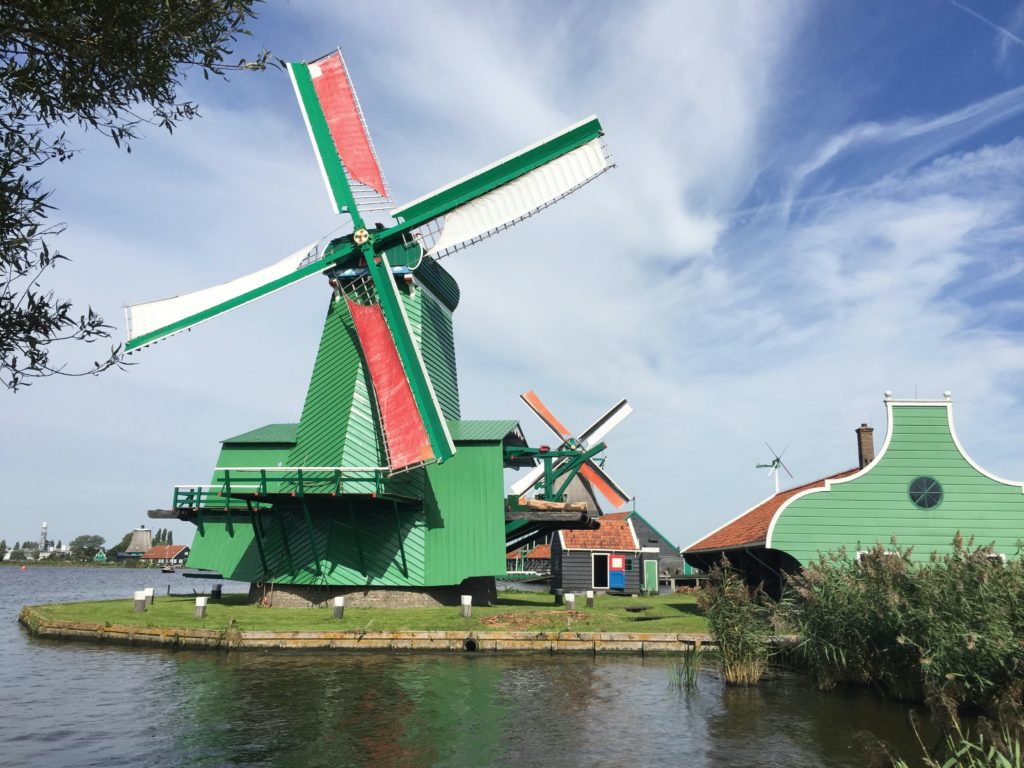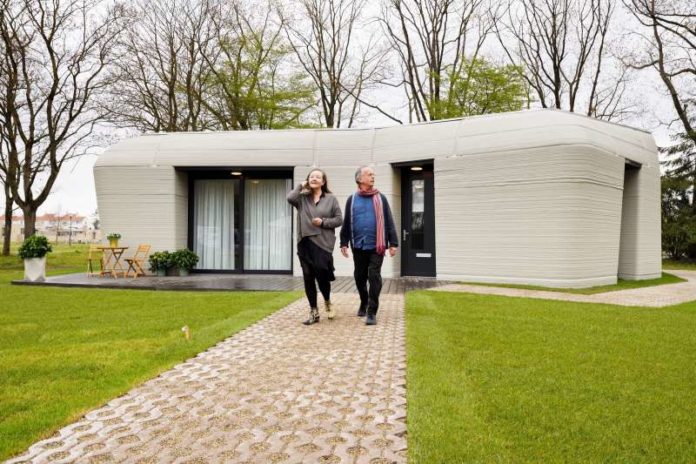In our ongoing efforts to provide companies with information that will help them take a leap into a new market, this volume of 3D ADEPT Mag focuses on “The Netherlands”. The present article highlights five things you should know about construction 3D printing in the country.
This article is very timely as we will explore the hidden complexities in construction 3D printing as part of our next additive talks session.
In the state of the art of the 3D printing market in the Netherlands, researches revealed that before the creation of 3D printing companies across the country, the kingdom first saw consumer-oriented companies trying to achieve some applications with 3D printing as well as a key focus on construction 3D printing. The truth is, first attempts to build with concrete 3D printing appeared in the mid-nineties at Weber Beamix’ facility but the market was simply not ready for it, for a commercialization purpose.
Over time, organizations and companies around the world started to explore the possibilities offered by construction 3D printing, which has not gone unnoticed by Dutch leaders in the field. In order to stay competitive, a group of these giants which include Ballast Nedam, BAM, Bekaert, Concrete Valley, CRH, CyBe, SGS Intron, Verhoeven Timmerfabriek Nederland, Weber Beamix, Van Wijnen, Witteveen+Bos and stichting SKKB decided to join forces to create a pavilion that will feature a massive robotic concrete 3D printer at Eindhoven University of Technology (TU/e). That was in 2015. Since then, these companies backed by the government and universities set the goal to make the Netherlands the leaders in construction 3D printing.
Today, several companies, aware of the potential of 3D printing for the architecture and construction industry have emerged; and when we look at the Dutch 3D printing market today, we can’t help but ask ourselves if construction 3D printing is not becoming a key differentiator that enables the country to stand out in the global 3D printing market.
Here are 5 things we have noticed about construction 3D printing in the Netherlands that we did not see in other European countries (yet).
1- Eindhoven is hosting the first European industrial 3D concrete printing facility
Two years ago, a group of partners that include Saint-Gobain Weber Beamix, BAM Infra, Bekaert, Witteveen+Bos, Eindhoven University of Technology and Van Wijnen decided to join forces to open first industrial 3D concrete printing facility in Europe. As you can see, some of these companies were involved in the “pavilion project” at TU/e.
The 3D printing house factory was located in Eindhoven, a city considered as the “tech capital” of the county. For the partners, this “commercial industrial location for 3D printing concrete components for construction” is meant to serve as a place of research, a place where they can 3D print in a commercially sustainable way, and a starting point for numerous projects including the “Project Milestone” that you will see below.
During the last quarter last year, another Dutch company, Vertico, opened its 3D concrete printing facility in the city. What makes Vertico outstanding is its focus on fine detailing and architectural applications, as opposed to the more thickset printing application in larger structures.

2- “Project Milestone”
In this industry, you know companies are really backing words with actions when you see the effective implementation of their promises. And when they deliver, it is not only a milestone for them, it’s a sign that the technology can do for a specific vertical industry.
In 2018, one year before announcing the opening of the 3D printing factory, the project Milestone was announced. Its goal? 3D printing five houses that will be rented in Eindhoven. At the heart of the project, one can find Eindhoven University of Technology, contractor Van Wijnen, Vesteda (real estate manager), Saint Gobain Weber Beamix (materials company) and Witteveen+Bos, an engineering company. Vesteda, the buyer of these houses, will rent them to those who will be interested. The architects Houben & Van Mierlo designed the project and were inspired by “erratic blocks in a green landscape”.
On April 30th 2021, the partners announced the completion of one of the first 3D printed houses. The first tenants, a Dutch couple, received the key and are currently experiencing life in this newly constructed home.
3- The Bridge Project
Another project that is currently taking shape in the Netherlands and that is worth mentioning is the Bridge Project. Presented for the first time at the “Innovatie Day” at RWS on October 2018, it is an initiative of Rijkswaterstaat, the Netherlands and Studio michiel van der kley in collaboration with the Technical University Eindhoven. It consists in applying new concrete 3D printing techniques in the building environment.
The original idea was to print a tunnel and Nijmegen had been chosen for the construction. The idea was quite timely as the city – located in the East of the country – wanted to build something eye catching and iconic after its nomination as the Green Capital of Europe in 2018. However, when the partners found the exact location of the construction, “it became clear that a tunnel wouldn’t be that easy, a bridge however would be very welcome”.
In April 2021, more pictures have been shared by the partners of the project. It is not over yet but what they have built until now is already 29.5 meter long. Until now, the longest 3D printed concrete bridge that has been certified by the Guinness World Records has been built in China and is 26.3 meter long. We are just at the printing phase of the “Bridge Project” and it has already beaten this record.

4- The biggest number of construction 3D printing companies in Europe – and probably in the world
The current list of companies that are pioneering 3D printed houses & automated construction is currently exhaustive. Between those that were born during the pandemic and those that went bankrupt, our latest research shows that the Netherlands is currently home to the largest number of 3D printing companies that focus partially or entirely to construction.
The country is currently hosting 10 companies that are paving the way for sustainable construction using 3D printing: Twente Additive Manufacturing, CyBe Construction, Vertico, BAM and Weber Beamix, Coastruction, CONCR3DE, Rohaco, DUS Architects, MX3D and Aectual.

5- The “current economic climate” looks good for the construction sector

Well, it’s a little bit hard to look at the construction 3D printing without any look at the “general state of the construction sector in a given region”. We did not dive into the legal framework and related jurisdiction – we will let you that part of the work -; but according to Lexology, a comprehensive source of international legal updates, analysis and insights, “the current economic climate has been good for the construction sector. Interesting trends include the redevelopment of existing buildings, sustainability/circularity and innovation. The demand for housing, logistics and data centres and flexible office concepts is also high and investors have shown an appetite for forward-funded projects. Further, new tax rules will likely lead to different ways of structuring projects, which will affect the number of entities used, financing and the moment of legal transfer”. You may find out more about the legal framework on their article dedicated to construction in the Netherlands.
Based on these five points, can we legitimately say that construction 3D printing industry in Europe advances at a good pace and the Netherlands is definitely part of the countries writing the history?
This feature has first been published in the May/June issue of 3D ADEPT Mag.
Do you need to gather more resources on construction 3D printing, make sure you register for our next additive talks session, that will be held on Wednesday 15, September from 03.30 pm to 04.30 CET.






